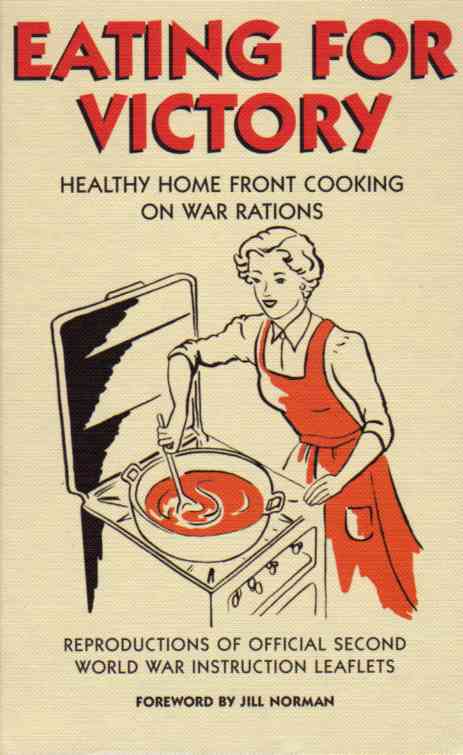 This is a fascinating book of reproductions of official Second World War instruction leaflets, and it will bring back memories for many a grandmother who had to feed a family on rations that seem very meagre by today’s standards.
This is a fascinating book of reproductions of official Second World War instruction leaflets, and it will bring back memories for many a grandmother who had to feed a family on rations that seem very meagre by today’s standards.
Picture this, dear reader: Britain is at war and imported produce has to run the gauntlet of enemy U-boats and battleships. Most of the men were away fighting but that still left millions of people at home working for the war effort. There was a risk that food wouldn’t last and so a strategy was adopted that gave fair shares to all, introduced the housewife to strange new products and taught her what to do with them.
Parks were dug up to grow vegetables, and people were encouraged to use their own gardens to produce as much food as possible. Chickens and rabbits were kept in many a back yard. City dwellers didn’t naturally have the countryman’s matter-of-fact attitude to livestock and were often reluctant to eat what had become a family member.
Rationing had the strange effect of actually improving the diet of many Britons. The depression years between the wars brought unemployment and poor health through lack of even basic nutrition. The Second World War brought full employment and rations that were, for some, better than the food that they were used to.
Housewives were tempted (oh, no they were not!) with whale meat and tins of spam, but children grew up not knowing what a banana was. A week’s ration consisted of 100g bacon, 6p worth of meat, 50-100g cheese, 100g margarine, 225g sugar, 50g tea, 1 egg, 2-3pints milk. Children had extra cod liver oil. Lucky kids!
Eating for Victory is full of recipes for things like Cheese and Vegetable Cutlets which sound quite nice. It’s a patty of mashed potatoes, peas, carrots, onion and cheese. The cheese is just described as “Cheese” so I guess there was just one sort.
Powdered milk and eggs were available and War Cookery Leaflet Number 11 is all about dried egg. This was pure egg that had been spray-dried but could be used in cooking once reconstituted with water. There is a chapter on Cakes Biscuits and Scones without Eggs and the recipes look very good.
The recipes all seem healthy although I think a modern diner might add a bit more seasoning, a raspberry vinaigrette or chilli-infused peanut oil. There are plenty of vegetables, and meat is more of a condiment. There are basic instructions for tart-making and bottling vegetables as well as advice on healthy eating.
Anyone with a passion for British food and its history will be enchanted by this book. It captures a dark time in our history but shows that life on the home front continued. Mums cooked, kids complained and people managed.
Eating for Victory
Authors: Ministry of Food with a forward by Jill Norman
Published by: Michael O’Mara Books Ltd.
Price: £9.99
ISBN 978-1-84317-264-2
Cookbook review by Chrissie Walker © 2018
